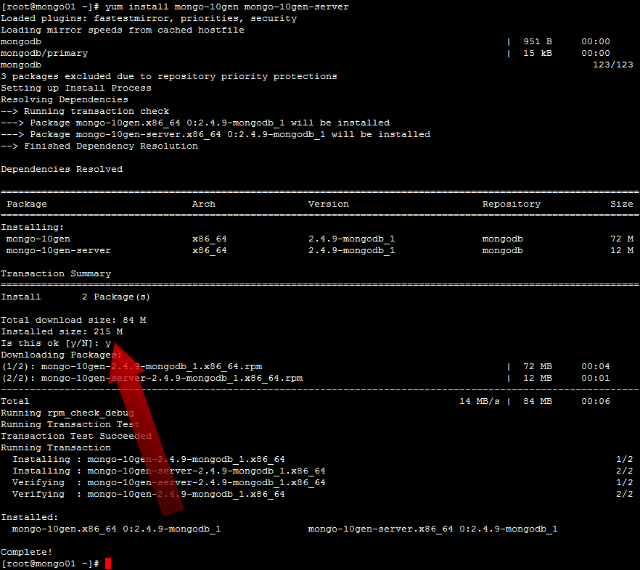# How To Install MongoDB on CentOS 6
Technical SupportMongoDB is a NoSQL database intended for storing large amounts of data in document-oriented storage with dynamic schemas. NoSQL refers to a database with a data model other than the tabular format used in relational databases such as MySQL, PostgreSQL, and Microsoft SQL. MongoDB features include: full index support, replication, high availability, and auto-sharding.
- These instructions are intended for installing MongoDB on a single CentOS 6 node.
- I’ll be working from a Liquid Web Core Managed CentOS 6.5 server, and I’ll be logged in as root.
For a refresher on editing files with vim see: New User Tutorial: Overview of the Vim Text Editorvim /etc/yum.repos.d/mongodb.repo
Option A: If you are running a 64-bit system, add the following information to the file you’ve created, using i to insert:[mongodb]<br />
name=MongoDB Repository<br />
baseurl=http://downloads-distro.mongodb.org/repo/redhat/os/x86_64/<br />
gpgcheck=0<br />
enabled=1
Then exit and save the file with the command :wq . You should see an output very similar to the following image:
Option B: If you are running a 32-bit system, add the following information to the file you’ve created, using i to insert:[mongodb]<br />
name=MongoDB Repository<br />
baseurl=http://downloads-distro.mongodb.org/repo/redhat/os/i686/<br />
gpgcheck=0<br />
enabled=1
Then exit and save the file with the command :wq .
At this point, installing MongoDB is as simple as running just one command:yum install mongo-10gen mongo-10gen-server
When prompted Is this ok [y/N]: , simply type y and then hit the enter key. You should see an output very similar to the following image: Start-Up MongoDB
Start-Up MongoDBservice mongod start
You should see an output very similar to the following image:
Check MongoDB Service Statusservice mongod status
Summary List of Status Statisticsmongostat
Enter the MongoDB Command Linemongo
You should see an output very similar to the following image:
By default, running this command will look for a MongoDB server listening on port 27017 on the localhost interface.
If you’d like to connect to a MongoDB server running on a different port, then use the –port option. For example, if you wanted to connect to a local MongoDB server listening on port 22222, then you’d issue the following command:mongo --port 22222
Shutdown MongoDBservice mongod stop
There are many, many more things we could say about MongoDB, but those will be detailed in follow-up articles in the Liquid Web Knowledge Base! Look for articles on: How To Install MongoDB and Run a Multi-Node Cluster on CentOS 6 , Recommended Production Settings for MongoDB on CentOS 6 and more!



